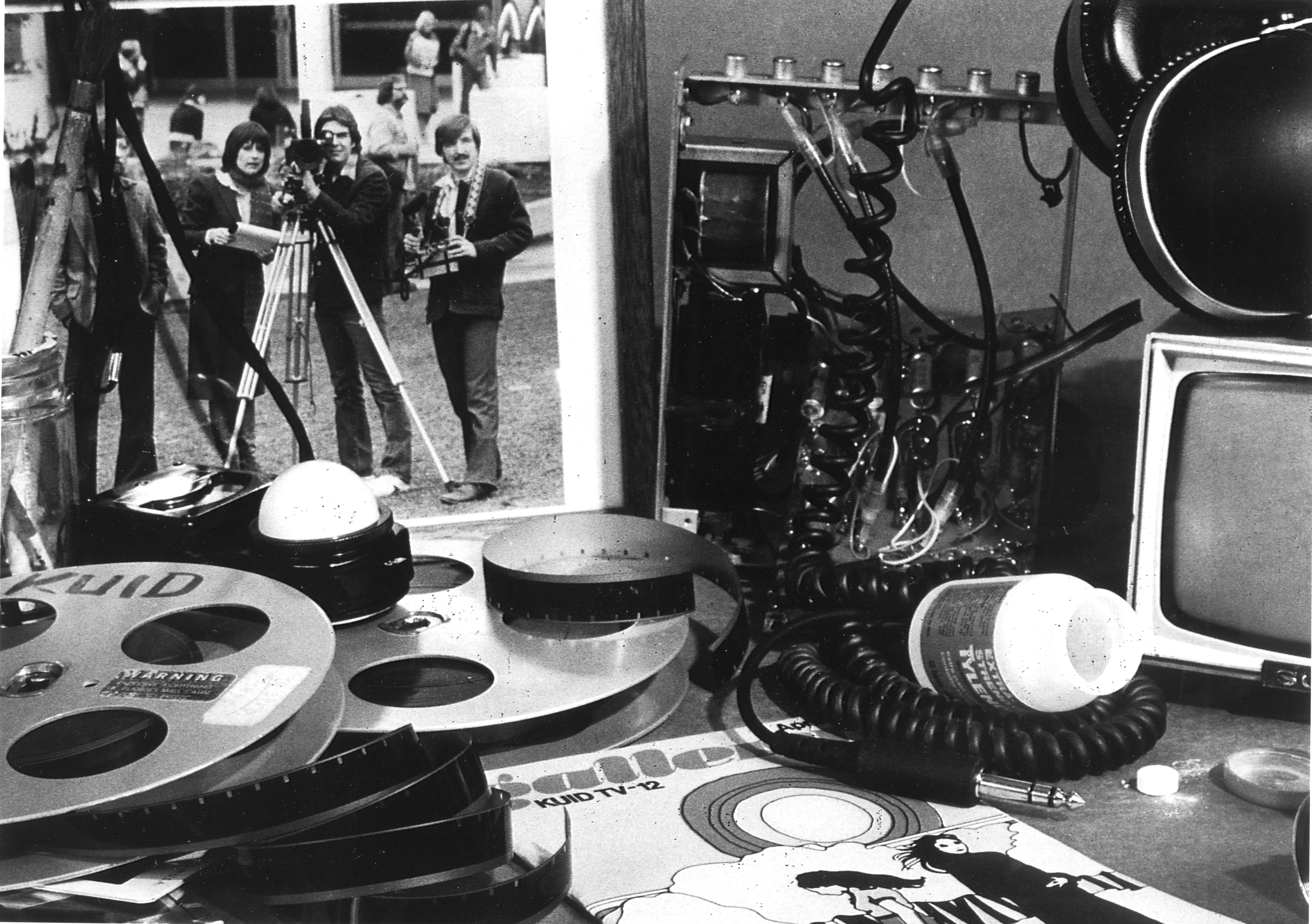"With the closed-circuit system and the addition of a low power FM radio station from which application is being made to the FCC, the Department of Communications will be one of the most thoroughly equipped in the Northwest"
Dr. William W. Snyder, Head, Department of Communications, Argonaut, Oct. 20, 1961

A timeline of broadcasting at the University of Idaho:
- Early 1950s: television content is added to UI courses; early backers include Communications Department Head Dr. Gordon Law and College of Letters and Science Dean Boyd Martin.
- 1954: University TV committee proposes creating a TV studio on campus for a closed-circuit television system.
- 1955: Television lab is established; personnel are teaching classes and producing informational films for distribution around the state.
- 1961: "KUID Television", a closed-circuit system used for teaching is installed.
- September 6, 1965: KUID-TV begins broadcasting within an 80-mile radius of Moscow and becomes the first public television station to go on the air in Idaho. Initial programs ran from 6:30pm to 9:30 or 10pm Monday – Friday.
- First televised graduation exercise in 1966.
- Aired the first live telecast of a UI sporting event (baseball).
- First public TV station in the United States to broadcast a statewide political debate (Senate candidates Frank Church and George Hansen) in 1968.
- First station in Inland Empire to originate color programming in 1968, starts with a few shows in color on Sunday nights.
- A statewide educational network was scheduled to be completed in the late 1960s, with stations at UI, Boise, and Idaho State University in Pocatello. These three stations were to provide programs to 92% of the public schools in Idaho.
- Full-time color programming arrives in 1973.
- Idaho Public Television is created in 1982, consolidating all three educational networks under one network governed by the Idaho State Board of Education.
The formal celebration is planned for today, October 9, 2015 with keynote address given by Paula Kerger, President of the Public Broadcasting Service and a reception following.

